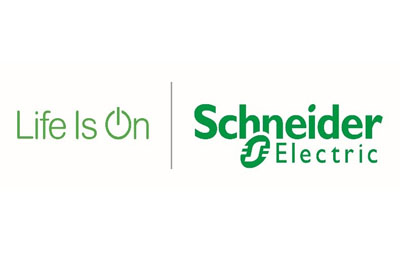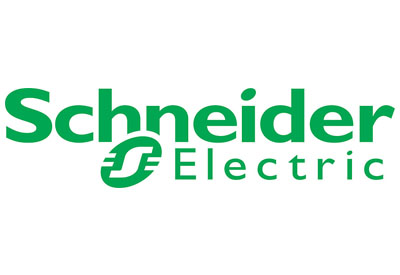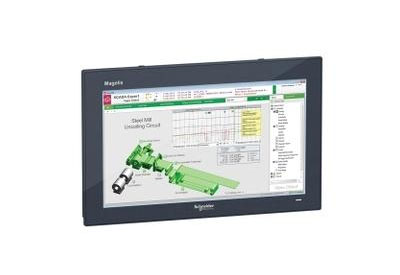Schneider Electric: An Integrated Ecosystem to Solve Edge Computing Challenges

May 16, 2019
By: Patrick Donovan and Wendy Torell
In an increasingly digitized and data-driven world, the challenge of providing high levels of compute power, connectivity and availability to where it is needed most, requires a hybrid architecture of edge data centres.
To support IT professionals in developing a strategy to deploy IT at the edge, Schneider Electric has released a new White Paper entitled “Solving Edge Computing Infrastructure Challenges”. The paper creates a structure for anticipating potential issues at the edge and details how to identify an ecosystem of partners with which to collaborate, integrate and deliver all of the essential infrastructure components required.
While providing many great benefits to users across industrial, enterprise, and retail consumer environments, edge data centres also present a number of challenges in terms of how they are built, deployed and managed. Due to their distributed nature and the growing number of deployments, edge sites are often unmanned and lack available IT staff, which makes them hard to manage efficiently, while ensuring low service and maintenance costs.
Collaborative vendor ecosystem is the key to deploy faster, more resilient and cost-effective at the edge
According to Worldwide Technology, “The ability to pre-configure technology platforms and devices before shipment increases deployment speed and can reduce field engineering costs by 25% to 40%, increasing order processing speed by 20% and reducing maintenance costs by 7%.” As such, a pre-integrated and collaborative approach within the vendor ecosystem, in addition to rule-based configuration tools, reference designs and cloud-based management software are key to making edge solutions faster to deploy, more resilient, and cost-effective for customers.
“The unique challenges of deploying and maintaining IT at the edge of the network dictates a new collaborative model”, said Wendy Torell, Sr. Research Analyst at Schneider Electric’s Science Centre. “This highly integrated approach involves vendors and partners working together to make selecting, deploying, and maintaining edge compute solutions much easier and more cost effective for end-users.”
This collaborative approach requires an integrated ‘edge’ ecosystem comprised of IT and Infrastructure Vendors, Original Equipment Manufacturers (OEM’s), Systems Integrators and Managed Service Providers (MSP’s), who work together in specific ways to simplify, accelerate, and ensure resiliency at the edge. The ecosystem works for the end user to monitor and maintain all edge assets, while delivering greater levels of uptime and cost-effectiveness for the end user. The ecosystem, in effect, becomes the extended workforce of the end user.
The responsibility of the vendors is to create simple tools to guide the selection and configuration of data centres, which are optimized for specific customer applications. Whether in retail, industrial or commercial consumer environments, vendors should test and optimize solutions, providing reference designs and systems that allow rapid integration of hardware and software management tools.
Additionally today’s businesses must rely on cloud-based management software, namely Data Centre Management as a Service (DMaaS) solutions such as Schneider Electric’s EcoStruxure IT and on-premise Data Centre Infrastructure Management (DCIM) tools, to manage multiple edge data centres efficiently in real-time. Using a combination of pre-integrated hardware solutions, in addition to cloud-based software, can reduce field engineering costs by between 25% and 40%, while increasing uptime and availability.
Overall, a collaborative ecosystem of vendors, partners, software and tools should be chosen to augment a customer’s edge computing requirements; from configuration to assembly and delivery, through to operation, management and maintenance.
White Paper No 277 “Solving Edge Computing Infrastructure Challenges” is immediately available for free download by clicking here, or visiting http://www.apc.com/wp?wp=277
About EcoStruxure
EcoStruxure is Schneider Electric’s open, interoperable, IoT-enabled system architecture and platform. It delivers enhanced value around safety, reliability, efficiency, sustainability, and connectivity for customers. EcoStruxure leverages advancements in IoT, mobility, sensing, cloud, analytics, and cybersecurity to deliver innovation at every level. This includes connected products, edge control and apps, analytics, and services. EcoStruxure has been deployed in more than 480,000 sites, with the support of more than 20,000 system integrators and developers, connecting over 1.6 million assets under management through over 40 digital services. Click here for more information about EcoStruxure IT.
About the authors
Patrick Donovan is a Senior Research Analyst for the Data Center Science Center at Schneider Electric. He has over 20 years of experience developing and supporting critical power and cooling systems for Schneider Electric’s Secure Power division including several award-winning power protection, efficiency and availability solutions.
Wendy Torell is a Senior Research Analyst at Schneider Electric’s Data Center Science Center. She researches best practices in data center design and operation and develops TradeOff Tools to help clients optimize the availability, efficiency and cost of their data center environments. She also consults with clients on availability science approaches and design practices to help them meet their data center performance objectives.
















